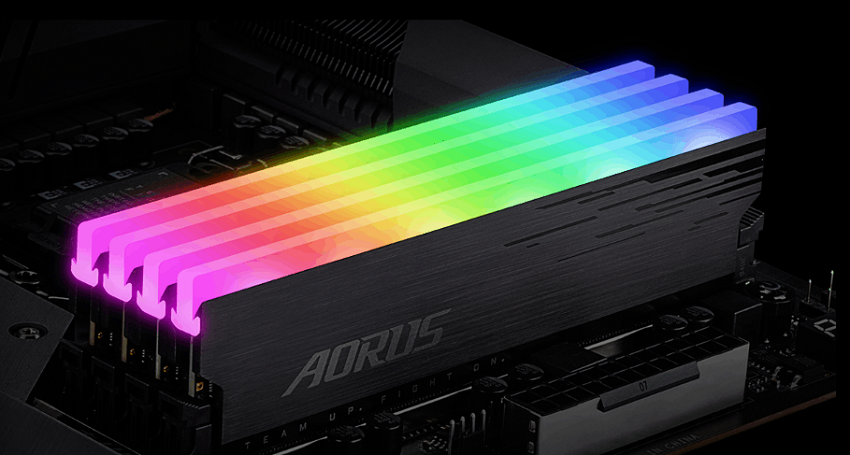
What is the FCLK Frequency for 4400MHz RAM?
Have you ever wondered about the FCLK frequency for 4400MHz RAM? If you’re into computer hardware and overclocking, you may have come across this term before. FCLK, or Fabric Clock, is an essential component of a computer system that determines the communication speed between the CPU (Central Processing Unit) and the RAM (Random Access Memory). In this article, we’ll explore the significance of FCLK frequency, its relation to RAM, and how it impacts overall system performance.
Understanding FCLK Frequency
FCLK frequency refers to the speed at which the CPU communicates with the RAM. It plays a crucial role in determining the overall performance and stability of a computer system. The FCLK frequency is tied to the Infinity Fabric technology used in AMD processors and affects the memory controller within the CPU. Explore the fclk frequency.
Importance of FCLK Frequency for RAM
The FCLK frequency has a direct impact on the RAM’s performance and bandwidth. When the FCLK frequency is set to match the RAM frequency, it allows for optimal data transfer rates between the CPU and RAM modules. If the FCLK frequency is lower than the RAM frequency, it can create a bottleneck and limit the RAM’s potential.
Overclocking and FCLK Frequency
Overclocking, the process of running computer components at higher frequencies than their default settings, often involves adjusting the FCLK frequency. When overclocking RAM to 4400MHz, for example, it is necessary to set the FCLK frequency to a compatible value to maintain stability. Overclocking enthusiasts carefully tune the FCLK frequency to achieve the best possible performance from their RAM.
Impact on System Performance
The FCLK frequency has a significant impact on overall system performance. When the FCLK frequency is properly configured to match the RAM speed, it allows for faster data transfers and reduced latency. This can result in improved application loading times, smoother multitasking, and enhanced gaming experiences.
Factors Influencing FCLK Frequency
Several factors can influence the FCLK frequency for 4400MHz RAM. It is important to consider the compatibility of the CPU and motherboard, as not all combinations can achieve high FCLK frequencies. Additionally, the quality and overclocking capabilities of the RAM modules themselves play a role in determining the achievable FCLK frequency.
Examples of FCLK Frequencies
To better understand the FCLK frequency for 4400MHz RAM, let’s consider a few examples. The FCLK frequency is typically set as a multiplier of the base frequency. For instance, an FCLK frequency of 1800MHz is achieved by setting the multiplier to 18 when using a 100MHz base frequency.
Different processors and motherboard combinations support varying FCLK frequency ranges. Some examples include:
- AMD Ryzen 5000 series processors: These CPUs are known for their strong memory performance and can often achieve FCLK frequencies of 1800MHz or higher.
- Intel Core i9 processors: While Intel CPUs don’t have the same Infinity Fabric technology as AMD, they have their own FCLK equivalents. For example, some Intel Core i9 processors can reach FCLK frequencies of 2400MHz.
- High-end motherboards: Premium motherboards designed for overclocking enthusiasts often provide better support for higher FCLK frequencies.
In conclusion, the FCLK frequency plays a crucial role in determining the performance and stability of a computer system, particularly when it comes to RAM. Configuring the FCLK frequency to match the RAM speed is essential for achieving optimal data transfer rates and minimizing bottlenecks. Overclocking enthusiasts often fine-tune the FCLK frequency to push their RAM modules to their limits, resulting in improved system performance.
By understanding the significance of FCLK frequency and its relation to 4400MHz RAM, you can make informed decisions when building or overclocking your computer system.
FAQs (Frequently Asked Questions)
- Can I set the FCLK frequency higher than the RAM frequency?
No, it is not recommended to set the FCLK frequency higher than the RAM frequency. It’s important to keep the FCLK frequency and RAM frequency synchronized for optimal performance and stability.
- What happens if the FCLK frequency is lower than the RAM frequency?
If the FCLK frequency is lower than the RAM frequency, it can create a performance bottleneck and limit the RAM’s potential. It’s important to ensure that the FCLK frequency is properly configured to match or exceed the RAM frequency.
- How can I check the current FCLK frequency on my system?
You can use various software utilities and monitoring tools, such as CPU-Z or HWiNFO, to check the current FCLK frequency on your system. These tools provide detailed information about your CPU, RAM, and other hardware components.
- Can I manually adjust the FCLK frequency in my BIOS settings?
Yes, most modern motherboards allow you to manually adjust the FCLK frequency in the BIOS settings. However, it’s important to refer to the motherboard manufacturer’s documentation and follow proper overclocking guidelines.
- Does FCLK frequency affect gaming performance?
Yes, the FCLK frequency can have an impact on gaming performance. A higher FCLK frequency can result in improved frame rates and reduced latency, leading to a smoother gaming experience.

Sorry, the comment form is closed at this time.